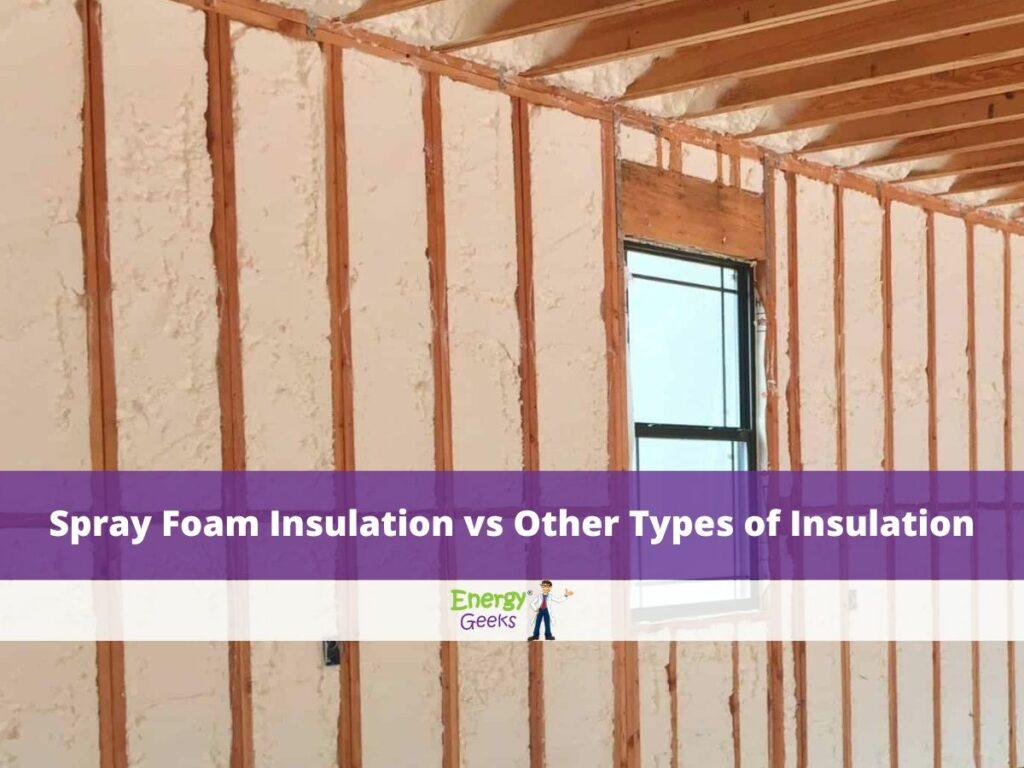ODDS & ENDS Our News Letter

What Is Spray Foam Insulation?
Spray foam is a self-adhering polyurethane mixed with water and sprayed on using a nozzle connected to a hose. Spray foam conforms to contours and expands to completely fill spaces, seal gaps and cures quickly. Essentially, it insulates whatever it sticks to. Depending on the density, it is also waterproof, insect-proof and vermin-proof.
There are two types of spray foam, Open-cell and closed-cell also known as low density and high density.
What Are The Other Types Of Commonly Used Insulation?
The other types of insulation that are commonly used are the following.
- Fiberglass insulation is made of fine glass fibers and is one of the most common types of insulation used in homes.
- Cellulose insulation is made from recycled paper and can be blown into walls and attics.
- Mineral wool insulation is made of rock or slag and is known for its excellent fire resistance.
- Rigid foam insulation is a type of plastic foam that is used to insulate roofs, walls, and foundations.
How Much Does Spray Foam Insulation Cost?
Spray foam insulation will cost more than any other type of insulation but may be worth the extra cost. Spray foam has qualities that make it superior to other products making the payback period relatively short compared to other insulation types.
Is Spray Foam Insulation Worth It?
Yes, it is worth it because you can expect to save thousands of dollars in energy costs over your lifetime. In fact, you can expect it to pay for itself in just a few short years through energy savings. There is also the added benefit of increased occupant comfort that comes with a home that has spray foam.
Two Types of Spray Foam-Open Cell & Closed Cell
The texture of open cell can be likened to a seat cushion whereas closed cell is more like a styrofoam cooler. Open cell will cost less, expand more, and has a lower R-value per inch. Conversely, closed cell costs more, expands less and has a higher R-value per inch. Most homes with spray foam usually have a mix of the two, where open cell is used in the exterior walls and closed cell is used in attics and finished and unfinished basements. Both provide excellent air sealing qualities which is very important when trying to achieve great Blower Door Test results.
What Are The Advantages & Disadvantages of Spray Foam Insulation?
Advantages of Spray Foam Insulation
- Can reduce your utility bills.
- Provides an airtight seal that is difficult to break.
- Depending on the density, it is impermeable to water.
- Deter mold and mildew buildup.
- Has a longer lifespan compared to other products.
- Spray foam insulation is an eco-friendly product.
- Stays in place and does not lose its R-value over time.
- Because of its air-sealing qualities it can keep outside noise and contaminants out of the home.
Disadvantages of Spray Foam Insulation
- Spray foam insulation requires a lot of experience to get it right.
- Spray foam insulation costs more to install than other options.
- Spray foam insulation requires time to cure and off-gas.
Bottom Line, we expect more spray foam to be used especially in new construction well into the foreseeable future.
We will have more to say about spray foam insulation next time.
Want to Learn More About Insulation, Minimizing Energy Consumption, and Maximizing Savings?
If you’d like more information on how you can minimize energy consumption and maximize savings while making your home more comfortable all year round, then contact Energy Geeks. Our mission is to provide the most comprehensive and efficient solutions to reduce energy use in your home.
Call: 401-766-1540 | 508-444-9800 | Get No Cost Estimate


